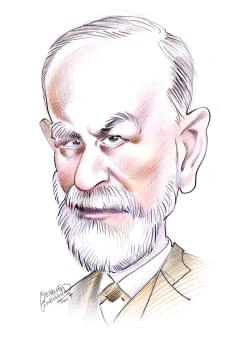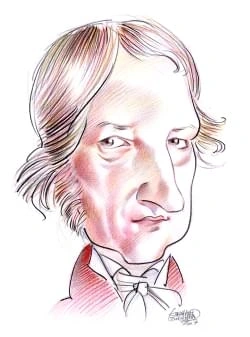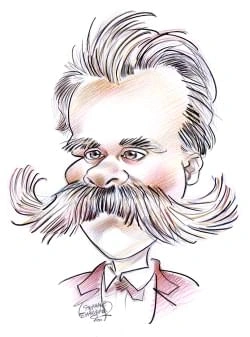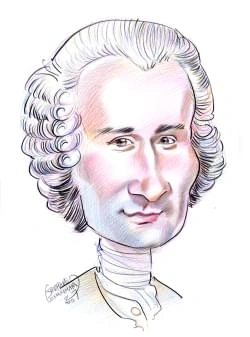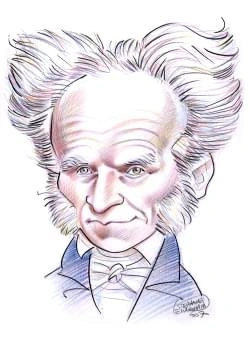608 résultats pour "mie"
-
Relativity
I
INTRODUCTION
Albert Einstein
In 1905 German-born American physicist Albert Einstein published his first paper outlining the theory of relativity.
in calculating very large distances or very large aggregations of matter. As the quantum theory applies to the very small, so the relativity theory applies to the verylarge. Until 1887 no flaw had appeared in the rapidly developing body of classical physics. In that year, the Michelson-Morley experiment, named after the American physicistAlbert Michelson and the American chemist Edward Williams Morley, was performed. It was an attempt to determine the rate of the motion of the earth through t...
-
Nunavut - Canadian History.
The Arctic Lands is a complex geological area that is centered on the Arctic Ocean. It includes coastal plains, plateaus, and mountains. Coastal plains and plateaus arefound in the western Northwest Territories section of the Arctic Lands, such as on Victoria Island, which is mostly a large, flat plateau. In striking contrast to theserelatively gentle landscapes, the eastern Nunavut section of the Arctic Lands is dominated by a jagged chain of ice-covered mountains. The mountains on EllesmereIsl...
-
Massachusetts - geography.
mi). Other large artificial lakes include Wachusett Reservoir, East Brimfield Reservoir, and Cobble Mountain Reservoir. Assawompsett Pond, covering about 10 sq km(about 4 sq mi), is the largest natural lake. North Watuppa Pond and Long Pond are other large natural lakes. Lake Chaubunagungamaug, near Webster, is usuallycalled Webster Lake, because the Algonquian name is difficult to pronounce and spell. The full version of the Native American name is said to be the longest place-namein North Amer...
-
Saturn - astronomy.
measurements of the magnetic field made by the Voyager space probes in the 1980s. Additional Cassini findings reported in March 2007 suggested that particles originating from geysers on the moon Enceladus may provide a partial explanation for thechange. The neutral gas particles become electrically charged and are captured by Saturn’s magnetic field, forming a disk of hot, ionized gas around the planet’sequator. The charged particles interact with the magnetic field and slow down the rotation of...
-
California - geography.
The Basin and Range province is an arid area of mountain ranges, basins, and deserts. In California it is represented primarily by parts of the Great Basin and SonoranDesert sections. Within the Great Basin lies Death Valley, whose lowest elevation, 86 m (282 ft) below sea level, is the lowest point in the Western Hemisphere. TheSonoran Desert section is characterized by numerous flat plains separated by low but rugged ranges. It includes the extensive Mojave, or Mohave, Desert. Also in thisprov...
-
California - USA History.
The Basin and Range province is an arid area of mountain ranges, basins, and deserts. In California it is represented primarily by parts of the Great Basin and SonoranDesert sections. Within the Great Basin lies Death Valley, whose lowest elevation, 86 m (282 ft) below sea level, is the lowest point in the Western Hemisphere. TheSonoran Desert section is characterized by numerous flat plains separated by low but rugged ranges. It includes the extensive Mojave, or Mohave, Desert. Also in thisprov...
- Mi once de marzo
-
Earth (planet).
Milky Way to complete one revolution around the Galaxy’s center. Earth’s axis of rotation is inclined (tilted) 23.5° relative to its plane of revolution around the Sun. This inclination of the axis creates the seasons and causes the height of the Sun in the sky at noon to increase and decrease as the seasons change. The Northern Hemisphere receives the most energy from the Sun when it is tiltedtoward the Sun. This orientation corresponds to summer in the Northern Hemisphere and winter in the S...
-
-
Earth (planet) - astronomy.
Milky Way to complete one revolution around the Galaxy’s center. Earth’s axis of rotation is inclined (tilted) 23.5° relative to its plane of revolution around the Sun. This inclination of the axis creates the seasons and causes the height of the Sun in the sky at noon to increase and decrease as the seasons change. The Northern Hemisphere receives the most energy from the Sun when it is tiltedtoward the Sun. This orientation corresponds to summer in the Northern Hemisphere and winter in the S...
-
Louisiana - geography.
lakes are on the Red River and its tributaries. In addition, small oxbow lakes are numerous in the Mississippi Alluvial Plain. Oxbow lakes are formed when a river cutsthrough the neck of one of its loops, or meanders, thus establishing a shorter course and leaving the former loop as a lake separate from the river. Louisiana also hassome artificially created reservoirs. C Coastline Louisiana’s long and irregular coastline extends along the Gulf of Mexico from the Pearl River on the east to the S...
-
Louisiana - USA History.
lakes are on the Red River and its tributaries. In addition, small oxbow lakes are numerous in the Mississippi Alluvial Plain. Oxbow lakes are formed when a river cutsthrough the neck of one of its loops, or meanders, thus establishing a shorter course and leaving the former loop as a lake separate from the river. Louisiana also hassome artificially created reservoirs. C Coastline Louisiana’s long and irregular coastline extends along the Gulf of Mexico from the Pearl River on the east to the S...
-
Igneous Rock.
As a magma cools, the first crystals to form will be of minerals that become solid at relatively high temperatures (usually olivine and a type of feldspar known asanorthite). The composition of these early-formed mineral crystals will be different from the initial composition of the magma. Consequently, as these growing crystalstake certain elements out of the magma in certain proportions, the composition of the remaining liquid changes. This process is known as magmatic differentiation.Sometime...
-
Northwest Territories - Geography.
million years ago by the severe bending (folding) and faulting (breaking) of sedimentary rock that was once part of the Interior Plains. During the Wisconsin Ice Age,alpine glaciers covered the Cordillera, and the movement of the glaciers created razor-sharp peaks and ridges in these mountains. The moving glaciers also createdbroad U-shaped valleys. To the east of the Interior Plains, the ancient rocks of the Canadian Shield are exposed at the Earth’s surface, resulting in a rough, rolling terra...
-
Northwest Territories - Canadian History.
million years ago by the severe bending (folding) and faulting (breaking) of sedimentary rock that was once part of the Interior Plains. During the Wisconsin Ice Age,alpine glaciers covered the Cordillera, and the movement of the glaciers created razor-sharp peaks and ridges in these mountains. The moving glaciers also createdbroad U-shaped valleys. To the east of the Interior Plains, the ancient rocks of the Canadian Shield are exposed at the Earth’s surface, resulting in a rough, rolling terra...
-
India - country.
delta in the north, are intensely farmed. B Rivers and Lakes The rivers of India can be divided into three groups: the great Himalayan rivers of the north, the westward-flowing rivers of central India, and the eastward-flowingrivers of the Deccan Plateau and the rest of peninsular India. Only small portions of India’s rivers are navigable because of silting and the wide seasonal variation inwater flow (due to the monsoon climate). Water transport is thus of little importance in India. Barrages,...
-
Venus (planet) - astronomy.
level winds circle the planet at 360 km/h (225 mph), making a complete rotation in only four days. These winds are said to super-rotate because they travel muchfaster than the rotation of the planet itself. These high-speed winds cover the planet completely, blowing toward the west at virtually every latitude from equator topole. The motions of descending probes, however, have shown that the bulk of Venus’s tremendously dense atmosphere, closer to the planet’s surface, is almoststagnant. From th...
-
-
São Paulo (city) - geography.
universities include the State University Paulista Júlio de Mesquita Filho (1976), and the even larger University of São Paulo (1934), which incorporates the city’s famousand influential Faculty of Law. Important private universities are Mackenzie University, originally founded by Presbyterian missionaries from the United States (1870);the Paulista University (1972); the Pontifical Catholic University of São Paulo (1946); and the University São Judas Tadeu (1971). The city is home to the São Pau...
-
Sweden - country.
mi) and is Sweden’s second largest lake, after Vänern. The two lakes, together with several smaller lakes, rivers, and canals, form an internal water route called theGöta Canal. Built in the early 19th century, the Göta Canal extends for about 386 km (about 240 mi) and provides a scenic transportation link between the Baltic Sea,at Stockholm, and the Kattegat. Sweden’s other large lakes in the district include Mälaren, Hjälmaren, and the famously picturesque Siljan. D Climate Although one-seven...
-
Hawaii (state) - geography.
limestone along the coast. The volcanoes of the Hawaiian Islands are all so-called shield volcanoes, or lava domes. Unlike the volcanoes of Alaska and South America, those of Hawaii were notcreated by very explosive eruptions. Formed mostly by lava flows, they are great rounded mountain masses, rather than steep-sided cones. Mauna Kea, dormant forcenturies, is the highest mountain in the state. It rises to 4,205 m (13,796 ft) above sea level, and its summit is dotted with cinder cones formed by...
-
Hawaii (state) - USA History.
limestone along the coast. The volcanoes of the Hawaiian Islands are all so-called shield volcanoes, or lava domes. Unlike the volcanoes of Alaska and South America, those of Hawaii were notcreated by very explosive eruptions. Formed mostly by lava flows, they are great rounded mountain masses, rather than steep-sided cones. Mauna Kea, dormant forcenturies, is the highest mountain in the state. It rises to 4,205 m (13,796 ft) above sea level, and its summit is dotted with cinder cones formed by...
-
Alaska - geography.
depression surrounded by highlands and have the coldest winter and hottest summer temperatures in Alaska. Once the Kuskokwim River passes through theKuskokwim Mountains, it forms the southern edge of a vast lake-studded alluvial plain bounded on the north by the Yukon River. This water-logged lowland is a majorsummer nesting area for birds. Fairbanks is the major city in this region, while Fort Yukon is the major community in the Yukon Flats and Bethel the largest settlementon the Lower Kuskokwi...
-
Alaska - USA History.
depression surrounded by highlands and have the coldest winter and hottest summer temperatures in Alaska. Once the Kuskokwim River passes through theKuskokwim Mountains, it forms the southern edge of a vast lake-studded alluvial plain bounded on the north by the Yukon River. This water-logged lowland is a majorsummer nesting area for birds. Fairbanks is the major city in this region, while Fort Yukon is the major community in the Yukon Flats and Bethel the largest settlementon the Lower Kuskokwi...
-
Republic of Indonesia - country.
Mahakam in East Kalimantan and the Martapura and Barito in South Kalimantan. Most of these rivers originate in the island’s central massif (mountain mass) and meander through extensive swamps as they approach the coast. Settlements such as Samarinda and Banjarmasin cluster along the rivers, which serve ascommunication routes into the interior. The largest rivers on Sumatra drain from west to east into the Strait of Malacca. In the north, the Asahan River once linked trade between the Batak peo...
-
United Kingdom - country.
B Natural Regions and Topography The island of Great Britain can be divided into two major natural regions—the highland zone and the lowland zone. The highland zone is an area of high hills andmountains in the north and west. The lowland zone in the south and east consists mostly of rolling plains. The zones are divided by an imaginary line running throughEngland from the River Exe on the southwest coast to the mouth of the River Tees on the northeast coast. The lowland zone has a milder climat...
-
-
Vocabulaire:
CHEMIN, substantif masculin.
abrupt; un chemin poudreux, sablonneux, caillouteux, pierreux, rocailleux; un chemin d?fonc?, accident?, verglac?; un chemin facile, rude. Un chemin (peu) fr?quent?, passant (Dictionnaire de l'Acad?mie Fran?aise 1835-78), (im)praticable, carrossable; un chemin familier. Un chemin muletier; un chemin bord? (de peupliers, de fleurs); un chemin en pente, en lacets; un chemin de c?te, de cr?te, de montagne; la boue, les cahots du chemin; ? la crois?e, ? l'embranchement, au carrefour des chemins; ouv...
-
Africa.
The highest elevations in Africa are found in the various ranges of East Africa. After Kilimanjaro, the next highest peaks are Mount Kenya (5,199 m/17,057 ft), north ofKilimanjaro in central Kenya; Margherita Peak (5,109 m/ 16,762 ft) in the Ruwenzori Range on the border between Uganda and the Democratic Republic of the Congo(DRC); Ras Dashen (4,620 m/ 15,157 ft) in the Ethiopian Highlands of northern Ethiopia; Mount Meru (4,565 m/ 14,977 ft), close to Kilimanjaro in Tanzania; and MountElgon (4,...
-
New York - geography.
The Adirondack province consists of a large highland area occupying 26,000 sq km (10,000 sq mi) in the northeastern quarter of the state. The region is domelike inshape, with the higher elevations toward the east. The western Adirondack province is more a rugged hill region and not truly mountainous. Geologically, this area isrelated to the Laurentian Upland, or Canadian Shield, which lies north of the St. Lawrence River, for it is composed of the same very old igneous rocks, principallygranite...
-
New York - USA History.
The Adirondack province consists of a large highland area occupying 26,000 sq km (10,000 sq mi) in the northeastern quarter of the state. The region is domelike inshape, with the higher elevations toward the east. The western Adirondack province is more a rugged hill region and not truly mountainous. Geologically, this area isrelated to the Laurentian Upland, or Canadian Shield, which lies north of the St. Lawrence River, for it is composed of the same very old igneous rocks, principallygranite...
-
Iraq - country.
The Euphrates begins in Turkey, crosses Syria, and enters Iraq at Abū Kam āl. The flow of the Euphrates into Iraq has been greatly reduced by dams built by Turkeyand Syria. The gradient of the Euphrates above the town of H īt, in west central Iraq, is steep. In the 2,640 km (1,640 mi) from its source in Turkey to H īt, the river fallsfrom 3,000 m (10,000 ft) to a low water elevation of 50 m (170 ft) above sea level, an average drop of 1 m per km (6 ft per mi). In Iraq below H īt the fall is very...
-
Africa.
The highest elevations in Africa are found in the various ranges of East Africa. After Kilimanjaro, the next highest peaks are Mount Kenya (5,199 m/17,057 ft), north ofKilimanjaro in central Kenya; Margherita Peak (5,109 m/ 16,762 ft) in the Ruwenzori Range on the border between Uganda and the Democratic Republic of the Congo(DRC); Ras Dashen (4,620 m/ 15,157 ft) in the Ethiopian Highlands of northern Ethiopia; Mount Meru (4,565 m/ 14,977 ft), close to Kilimanjaro in Tanzania; and MountElgon (4,...
-
Africa - Geography.
The highest elevations in Africa are found in the various ranges of East Africa. After Kilimanjaro, the next highest peaks are Mount Kenya (5,199 m/17,057 ft), north ofKilimanjaro in central Kenya; Margherita Peak (5,109 m/ 16,762 ft) in the Ruwenzori Range on the border between Uganda and the Democratic Republic of the Congo(DRC); Ras Dashen (4,620 m/ 15,157 ft) in the Ethiopian Highlands of northern Ethiopia; Mount Meru (4,565 m/ 14,977 ft), close to Kilimanjaro in Tanzania; and MountElgon (4,...
-
Asia - Geography.
Borneo, the world’s third largest island after Greenland and New Guinea. To the southeast is the Timor Sea separating the Asian island of Timor from the Australiancontinent. The Indian subcontinent is flanked by the Bay of Bengal on the east and the Arabian Sea on the west. The island of Sri Lanka and the much smaller Maldives andNicobar Islands trail away to the south. The Arabian Sea’s Gulf of Aden, the Red Sea, the Mediterranean Sea, and the Black Sea form an arc along the western rim of Asia...
-
-
Asia - History.
Borneo, the world’s third largest island after Greenland and New Guinea. To the southeast is the Timor Sea separating the Asian island of Timor from the Australiancontinent. The Indian subcontinent is flanked by the Bay of Bengal on the east and the Arabian Sea on the west. The island of Sri Lanka and the much smaller Maldives andNicobar Islands trail away to the south. The Arabian Sea’s Gulf of Aden, the Red Sea, the Mediterranean Sea, and the Black Sea form an arc along the western rim of Asia...
-
Prince Edward Island - Geography.
hectares (109 acres) each. In 2006 there were 1,700 farms, of which the average size was 148 hectares (366 acres). In 2005 the total farm cash receipts were C$510million. The most important agricultural products in terms of value include potatoes, milk and cream, cattle and calves, hogs, tobacco, vegetables, eggs, hens andchickens, and furs. For the most part the island’s agriculture is diversified, rather than specialized, because of the lack of a large urban industrial population within easy r...
-
Prince Edward Island - Canadian History.
hectares (109 acres) each. In 2006 there were 1,700 farms, of which the average size was 148 hectares (366 acres). In 2005 the total farm cash receipts were C$510million. The most important agricultural products in terms of value include potatoes, milk and cream, cattle and calves, hogs, tobacco, vegetables, eggs, hens andchickens, and furs. For the most part the island’s agriculture is diversified, rather than specialized, because of the lack of a large urban industrial population within easy r...
-
Solar System - astronomy.
dwarf planets according to the IAU because they have rounded shapes from their own gravity but have not cleared their neighborhoods in space of other objects—bothorbit through the Kuiper Belt, a region beyond Neptune containing thousands of small icy bodies. Pluto and Eris are composed of layers of ice around a rocky core.Ceres qualifies as a dwarf planet because it is spherical but is found in the asteroid belt, a zone between the orbits of Mars and Jupiter that contains thousands of smallrocky...
-
Africa - history.
Africa’s other major mountainous regions occur at the northern and southern fringes of the continent. The Atlas Mountains, a system of high ranges, extend for 2,200 km(1,400 mi) across Morocco, Algeria, and Tunisia, roughly parallel to the northern coast. These ranges enclose a number of broad inland basins and plateaus. In the west, theHigh (or Grand) Atlas contains Toubkal (4,165 m/ 13,665 ft), the highest peak of the system. Toward the east, the Atlas consists of two parallel ranges: the Tell...
-
Sun - astronomy.
A The Sun’s Place in the Milky Way The Milky Way Galaxy contains about 400 billion stars. All of these stars, and the gas and dust between them, are rotating about a galactic center. Stars that arefarther away from the center move at slower speeds and take longer to go around it. The Sun is located in the outer part of the galaxy, at a distance of 2.6 × 10 17 km (1.6 × 10 17 mi) from the center. The Sun, which is moving around the center at a velocity of 220 km/s (140 mi/s), takes 250 million y...
-
Georgia (state) - geography.
B Rivers and Lakes Most of the rivers of Georgia drain eastward to the Atlantic Ocean proper or southward to the Gulf of Mexico. Only a few flow northward to the Tennessee River, which isa major tributary of the Mississippi River. Most of the rivers flowing to the coasts are navigable by barges and small craft as far upstream as the Fall Line. The major river flowing to the Atlantic is the Savannah River, which, with the Tugaloo River, one of its headwaters, forms most of the state’s eastern bo...
-
Georgia (state) - USA History.
B Rivers and Lakes Most of the rivers of Georgia drain eastward to the Atlantic Ocean proper or southward to the Gulf of Mexico. Only a few flow northward to the Tennessee River, which isa major tributary of the Mississippi River. Most of the rivers flowing to the coasts are navigable by barges and small craft as far upstream as the Fall Line. The major river flowing to the Atlantic is the Savannah River, which, with the Tugaloo River, one of its headwaters, forms most of the state’s eastern bo...
-
-
Yukon Territory - Geography.
Tourism is the second most important private sector industry in the Yukon. Visitors come to fish, hunt, enjoy the rugged scenery, and see the historic buildings andcreeks associated with the gold rush. Some marten, lynx, muskrat, wolverine, and other fur-bearing animals are still trapped, but the Yukon plays a minor role in Canadian fur production. The Yukon’s manufacturing industries consist almost exclusively of some mineral refining, printing, and sawmilling. Several hydroelectric plants gene...
-
Yukon Territory - Canadian History.
Tourism is the second most important private sector industry in the Yukon. Visitors come to fish, hunt, enjoy the rugged scenery, and see the historic buildings andcreeks associated with the gold rush. Some marten, lynx, muskrat, wolverine, and other fur-bearing animals are still trapped, but the Yukon plays a minor role in Canadian fur production. The Yukon’s manufacturing industries consist almost exclusively of some mineral refining, printing, and sawmilling. Several hydroelectric plants gene...
-
Korean War.
During the summer of 1949, South Korea had expanded its army to about 90,000 troops, a strength the North matched in early 1950. The North had about 150 SovietT-34 tanks and a small but effective air force of 70 fighters and 62 light bombers—weapons either left behind when Soviet troops evacuated Korea or bought from theUSSR and China in 1949 and 1950. By June 1950 American data showed the two armies at about equal strength, with roughly equal numbers amassed along the 38thparallel. However, thi...
-
Korean War - History.
During the summer of 1949, South Korea had expanded its army to about 90,000 troops, a strength the North matched in early 1950. The North had about 150 SovietT-34 tanks and a small but effective air force of 70 fighters and 62 light bombers—weapons either left behind when Soviet troops evacuated Korea or bought from theUSSR and China in 1949 and 1950. By June 1950 American data showed the two armies at about equal strength, with roughly equal numbers amassed along the 38thparallel. However, thi...
-
Korean War - U.
During the summer of 1949, South Korea had expanded its army to about 90,000 troops, a strength the North matched in early 1950. The North had about 150 SovietT-34 tanks and a small but effective air force of 70 fighters and 62 light bombers—weapons either left behind when Soviet troops evacuated Korea or bought from theUSSR and China in 1949 and 1950. By June 1950 American data showed the two armies at about equal strength, with roughly equal numbers amassed along the 38thparallel. However, thi...
-
Weather.
hours, and the snow can be much deeper in places where the wind piles it up in drifts. Extraordinarily deep snows sometimes accumulate on the upwind side ofmountain slopes during severe winter storms or on the downwind shores of large lakes during outbreaks of polar air. VI WIND Wind is the horizontal movement of air. It is named for the direction from which it comes—for example, a north wind comes from the north. In most places near theground, the wind speed averages from 8 to 24 km/h (from 5...
-
Asia - geography.
the Himalayas, the world’s highest mountain system. The Pacific Ocean plate drifted westward, scraping along the Eurasian plate and slipping under its coastal edge. This created the islands of Japan, Taiwan, the Kurils, theRyūky ūs, and the Philippines. Southeast Asia lies at the intersection of the Eurasian, Pacific Ocean, and Indian Ocean plates. Over time the contact between these platescreated the mountain ranges of mainland Southeast Asia. The continued slow movement of the plates causes fr...
-
Asia - history.
the Himalayas, the world’s highest mountain system. The Pacific Ocean plate drifted westward, scraping along the Eurasian plate and slipping under its coastal edge. This created the islands of Japan, Taiwan, the Kurils, theRyūky ūs, and the Philippines. Southeast Asia lies at the intersection of the Eurasian, Pacific Ocean, and Indian Ocean plates. Over time the contact between these platescreated the mountain ranges of mainland Southeast Asia. The continued slow movement of the plates causes fr...
-
-
Tokyo - geography.
The port of Tokyo has expanded tremendously in recent years and is now the second largest in Japan (after Yokohama) in value of trade. In 1993 it accounted forapproximately 14 percent of all trade by Japan’s ports. Reasons for the port’s growth include the deepening of sea lanes in Tokyo Bay, large reclamation projects tocreate room for new facilities and container terminals, and improvements to storage and distribution facilities. The largest categories of exports from the port of Tokyoare mach...
-
Praca w o?
reminiscencja z pierwszej w życiu kolonii, kiedy podczas zbiórki każdy musiał krzyknąć swoje imię i pokazać, co lubi robić. Ja, dziecko, zahukane, z bardzo mocno wpojonym imperatywem bycia zawsze poprawnym i bezbłędnym (z perspektywy czasu i lat pracy nad sobą, mogę to stwierdzić), trzęsłam się jak osika, czekając na swoją kolej. Gardło miałam tak suche, że z trudem przełykałam ślinę, a co dopiero wydukać trzy lite...
}})
